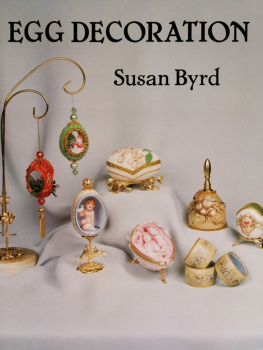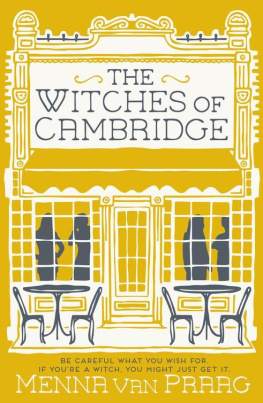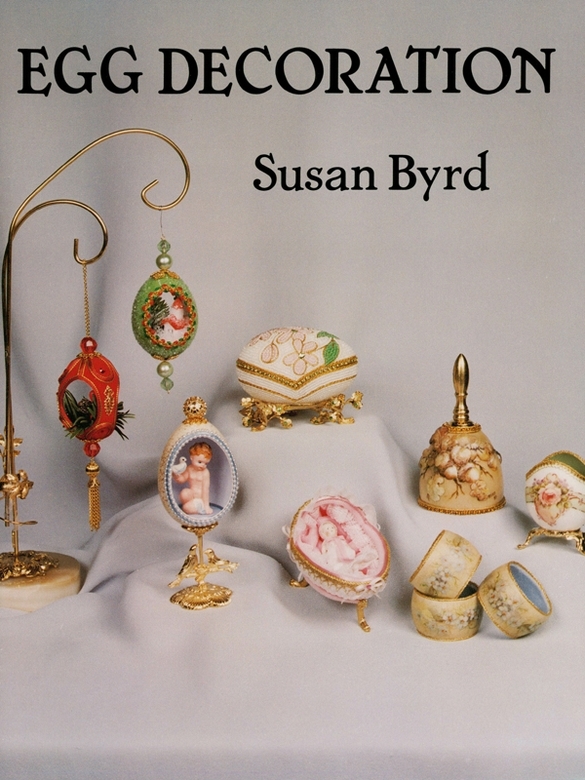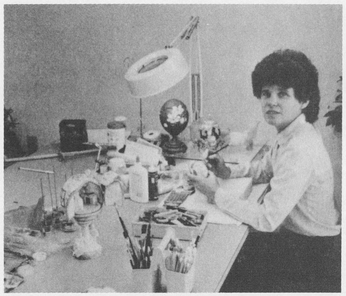DOVER CRAFT BOOKS
EGG DECORATION, Susan Byrd. (0-486-26804-7)
EASY-TO-MAKE BIRD FEEDERS FOR WOODWORKERS, Scott D. Campbell, (0-486-25847-5)
MAKING CHAIR SEATS FROM CANE, RUSH AND OTHER NATURAL MATERIALS, Ruth B. Comstock. (0-486-25693-6)
THE COMPLETE BOOK OF STENCILCRAFT, JoAnne Day. (0-486-25372-4)
THE SPLENDID ART OF DECORATING EGGS, Rosemary Disney. (0-486-25030-X)
SHELL CRAFT, Virginie Fowler Elbert. (0-486-27730-5)
LEATHER TOOLING AND CARVING, Chris H. Groneman. (0-486-23061-9)
EASY-TO-MAKE CANDLES, Gary V. Guy. (0-486-23881-4)
THE JEWELRY ENGRAVERS MANUAL, R. Allen Hardy & John J. Bowman. (0-486-28154-X)
SILK PAINTING, Jill Kennedy & Jane Varrall. (Available in United States and Canada only.) (0-486-27909-X)
METALWORK FOR CRAFTSMAN, Emil F. Kronquist. (0-486-22789-8)
BASIC BOOKBINDING, A. W. Lewis. (0-486-20169-4)
THE COMPLETE BOOK OF PUPPETRY, George Latshaw (0-486-40952-X)
EASY-TO-MAKE WHIRLIGIGS, Anders S. Lunde, (0-486-28965-6)
MAKING ANIMATED WHIRLIGIGS, Anders S. Lunde (0-486-40049-2)
KNOTCRAFT, Allan & Paulette Macfarlan. (0-486-24515-2)
METALWORK AND ENAMELLING, Herbert Maryon. (0-486-22702-2)
HOW TO MAKE DRUMS, TOM-TOMS AND RATTLES, Bernard Mason. (0-486-21889-9)
FANTASY DESIGNS STAINED GLASS PATTERN BOOK Carolyn Relei (0-486-43299-8)
POTTERY FORM, Daniel Rhodes (0-486-43513-X)
HAND PUPPETS: HOW TO MAKE AND USE THEM, Laura Ross (0-486-26161-1)
THE COMPLETE CALLIGRAPHER, Frederick Wong. (0-486-40711-X)
Paperbound unless otherwise indicated. Available at your book dealer, online at wwwdoverpublications.com, or by writing to Dept. 23, Dover Publications, Inc., 31 East 2nd Street, Mineola, NY 11501. For current price information or for free catalogs (please indicate field of interest), write to Dover Publications or log on to wwwdoverpublications.com and see every Dover book in print. Each year Dover publishes over 500 books on fine art, music, crafts and needlework, antiques, languages, literature, childrens books, chess, cookery, nature, anthropology, science, mathematics, and other areas.
Manufactured in the U.S.A.
CHAPTER I
HISTORY
It is surprising how many people have never heard of egg decorating, or perhaps heard of it, but have never seen it. A typical conversation about eggs might go something like this: A new acquaintance wants to know about your hobbies and you tell them I do eggs. There will be a little pause while your words soak in, and then they will politely ask, You do what? (Your words really didnt soak in at all.) So you answer, just as politely, I decorate eggshells. Now you can see a glimmer of understanding in their eyes! And you know very well they are thinking Easter Eggs. Well, just keep cool, and explain to them that what you do with eggs is in no way related to the mental image they have just conjured up of the typical dyed Easter Egg! And you might as well drag out your egg pictures to illustrate your words. Otherwise, they will never understand!
If you really have their attention now, or if they cant get away, just go ahead and give them your whole speech. They will be interested to know that egg decorating isnt new, even though they have never heard of it before. On the contrary, history shows that it began in ancient times, long before the time of Christ. The first recorded mention of it dates back to ancient China, when colored eggs were given during spring fertility festivals. As the mysterious source of new life, the egg was thought to have great magical powers, and thus was held in awe and reverence by many ancient peoples.
Over the centuries the art of egg decorating became more sophisticated. By the thirteenth century gold leafed eggs were known to have been presented to the English Court by King Edward I, and by the sixteenth century eggs with surprises in them had come into existence. Eggs were very popular among European nobility of this era, and by the reign of Louis the XV the decorating and giving of eggs was widespread, especially in France.
Practically every country has its version of the decorated egg, and today we can see the special styles and techniques each has developed, and handed down through the ages. One style which must be mentioned is the jeweled style, made famous by Peter Carl Faberge, jeweler to the Russian Court during the late eighteen hundreds and early nineteen hundreds. His Imperial Easter Eggs, made between 1884 and 1916, were not, however, made of actual eggshells, but of precious metals and jewels, fashioned into intricately beautiful, egg-shaped works of art. These eggs have been a joy and an inspiration to the modern day egg artist.
Egg art, as we know it in this country, is fairly young, only really beginning to emerge within the last twenty years or so. There were egg projects, such as Easter egg trees, etc., being done much earlier than this, but few eggs were being done then the way they are today.
There is seemingly no end to the variety of eggs that are being done today, and a good way to see them is to visit one of the many egg shows held around the country each year! (An egg show is an exciting event, even for those who never plan to become an egger!) The huge variety of styles and techniques will have your head buzzing with new ideas of your own!
Usually there are seminars held in conjunction with shows, and, as I mentioned before, seminars are one of the best ways to learn, (notwithstanding great instruction books like this one!) If you have a chance to take a seminar, by all means do so. Choose one that will be a challenge to you, but not be too advanced.
CHAPTER II
POINTS TO CONSIDER
First, keep in mind that eggery is, after all, just a hobby, and perfection isnt the name of the game. But dont get me wrong! I want you to do the very best that you can. In fact I expect it of you! I would like for you to work hard at doing a good job, but not to the point that it becomes a chore and the pleasure is lost. When that happens, it is time to draw the line. The idea is to enjoy what you are doing, and feel relaxed about it!
Point Two; Always remember that no two people do anything just alike. Some are confident and move right ahead, while others may be more timid and require more help. Some will choose one tool to do a job, others will use something else, and so on. All these differences are perfectly OK! After all, this is what makes variety in our lives. (How dull things would be without variety!) So dont worry if you are a little slower than someone else! The very fact that you are slower might just put you in a position to profit by the mistakes and snags the speedier ones could run into! Simply take your time, do the best you can, and enjoy yourself! Also, dont be concerned if your egg isnt as perfect as someone elses. Just remember that you have learned on it, and can always do another one better. People are always their own worst critics. The flaws you can see, simply because you know they are there, would rarely be noticed by someone else, because they are seeing the egg as a whole and not concentrating on one tiny aspect of it.












